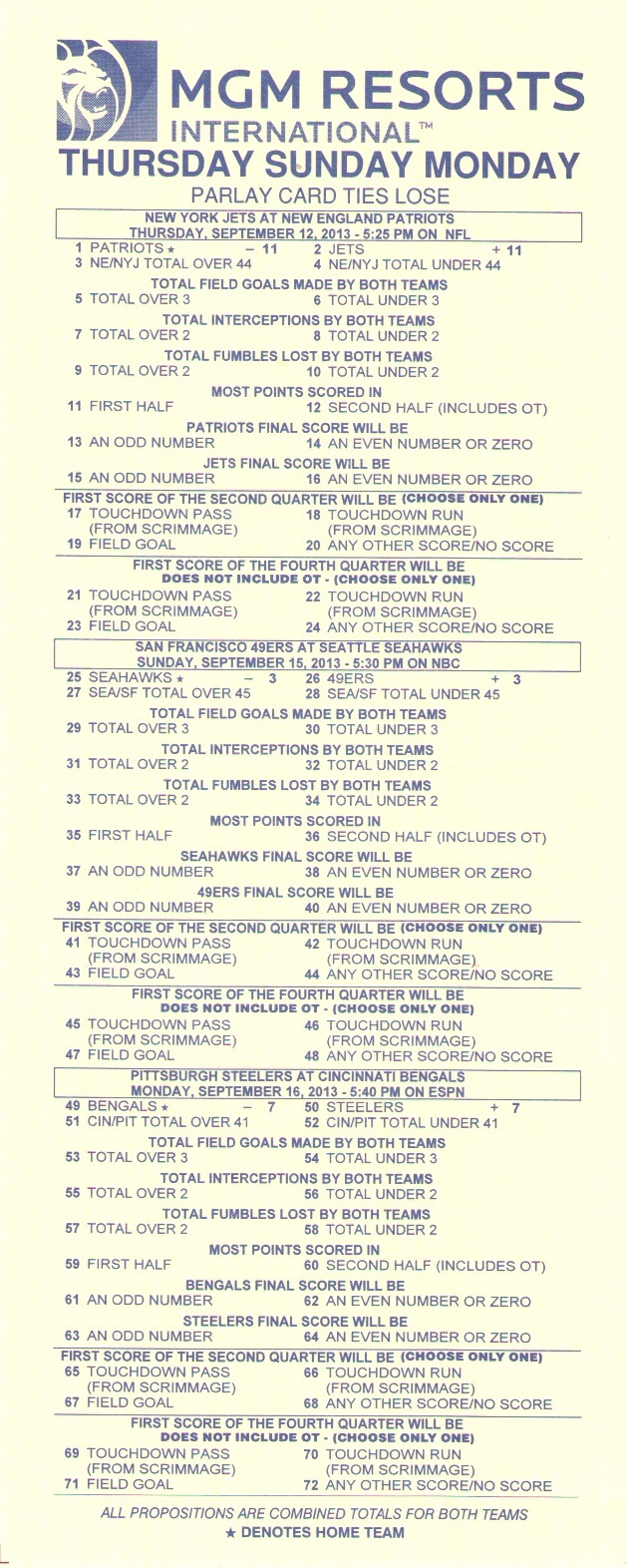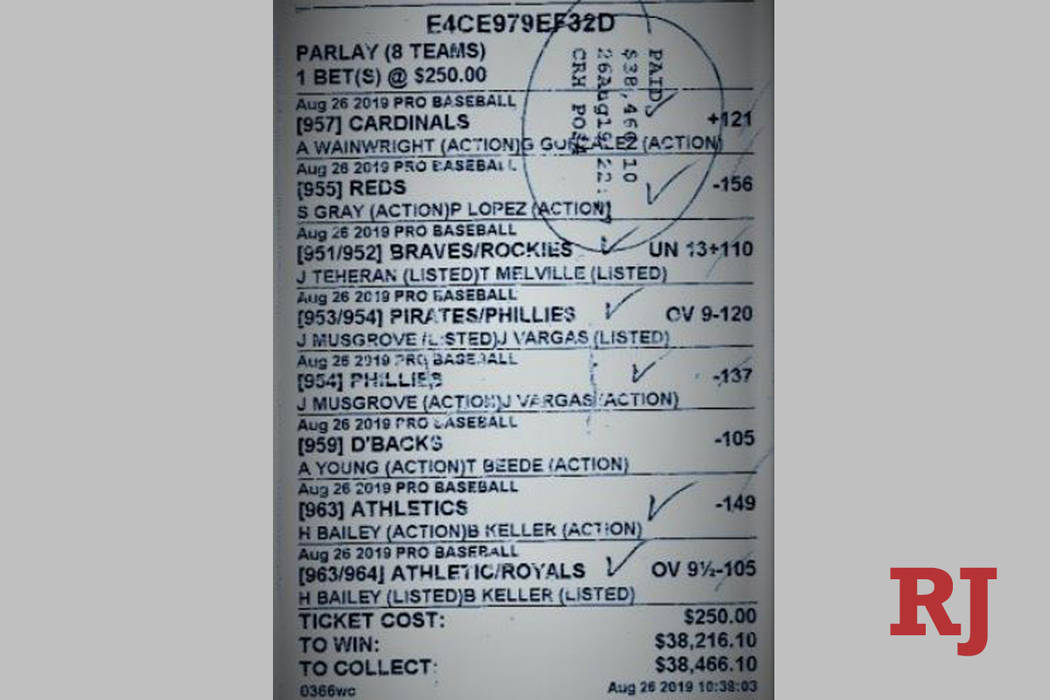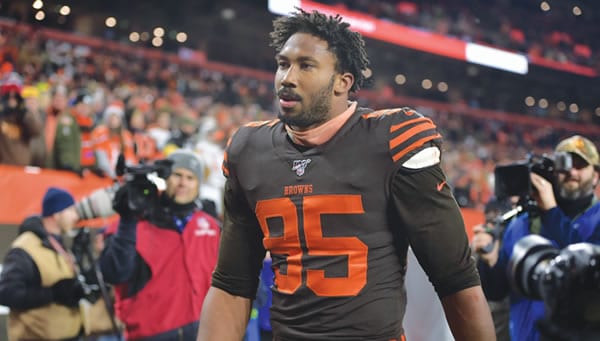A parlay is a type of wager where multiple outcomes are selected. Each of the outcomes must win in order for the parlay to win. Any point spread tie reduces to the next lowest number of teams in the parlay. The odds for the number of teams placed in a parlay are based on the pay table below when the selections (point spreads and totals for football and basketball, games and segments) have a default line of -110. Listed below is the BetMGM/Borgata Online pay table.
Odds Of Hitting 7 Team Parlay
If, instead, the spread was Home Team -7 -105 / Road Team +7 -115, this is no longer a 50/50 proposition, and the payout will be calculated using a method bookmakers refer to as “true odds”. I’ll cover that later in this article, but first let’s take a moment to understand where fixed parlay odds are derived from. A 10 team parlay will pay out 643 times your wager amount assuming each leg of the parlay has -110 odds. For example, if you place a $10 bet on a 10 team parlay, your pay out would be $6,430. What does a $20 two team parlay pay? 7-Team Parlay: 75 to 1 8-Team Parlay: 150 to 1 9-Team Parlay: 300 to 1. But the way you determine the payout is not based on a pre-determined schedule, being that the odds for baseball teams are all different. You simply use the odds to determine the potential payout. So let’s say you make a $100 parlay on these two teams. Typical point spread payouts look like this: 2 team parlay – 13/5 odds. 3 team parlay – 6/1 odds. 4 team parlay – 10/1 odds. 5 team parlay – 25/1 odds. 6 team parlay – 40/1 odds. The odds continue to get larger and better for the person making the wager with the more teams you add to it.
All Football and Basketball Parlays
(Point Spreads and Totals all - 110)
2 Teams | +260 |
3 Teams | +600 |
4 Teams | +1000 |
5 Teams | +2000 |
6 Teams | +4000 |
7 Teams | +8000 |
8 Teams | +15000 |
9 Teams | +30000 |
10 Teams | +60000 |
11 Teams | +110000 |
| 12 Teams | +200000 |
| 13 Teams | +300000 |
| 14 Teams | +600000 |
| 15 Teams | +1000000 |
Parlay Odds Selections:
The legs in a Pay Table parlay all must meet the following requirements:

- Football, basketball (excluding money lines) and their halves or quarters
- Point spread or totals
- Default odds that are set at -110.
Maximum payoff on off the board parlays is 10000/1. Acceptance of all parlays is at the discretion of management.
Example 1: The 2-team parlay (See picture below) is a standard parlay paying 2.6 to 1 or 3.6 for 1. Using the Pay Table, $10.00 x 3.6 = $36.00 payout. Pay Table parlays are not calculated using “true odds” (-110 is not .9091 in this case). The Pay Table Multiplier section below explains the way that Pay Table odds are calculated.
PARLAY (2 TEAMS) | |
|---|---|
1 PARLAY @$10.00 | |
24Jan PRO FOOTBALL | |
[302] COLTS | -71/2-110 |
22Jan PRO BASKETBALL | |
[702] BOBCATS | -6-110 |
Ticket Cost: | $10.00 |
To Win: | $26.00 |
Collect: | $36.00 |
WRIT2 SR_POS2 | 22Jan18 11:02:40 |
Pay Table Multiplier
This is the factor that, when used for each leg of a parlay, gives the Pay Table payout. For a 2-team parlay at default odds, the factor is a square root. For a 3-team parlay, it is a cube root, for a 4-team parlay, it is the 4th root of the payout.
The return on a 2-team Pay Table parlay at 2.6 to 1 is 3.6 for one, as the payout. The square root of 3.6 is 1.8974. This is the Pay Table Multiplier for 2-team parlays.
$10 X 1.89736 X 1.89736 = 36.00.
Below is the pay table multiplier which is used as the method to calculate pay table parlays when the default odds are -110.The respective Pay Table Multiplier (shown below) by the True Odds Multiplier of the number (other than -110) minus the True Odds Differential (shown below).
2 Teams | 1.89736 |
3 Teams | 1.91293 |
4 Teams | 1.82116 |
5 Teams | 1.83841 |
6 Teams | 1.85693 |
7 Teams | 1.87344 |
8 Teams | 1.87228 |
9 Teams | 1.88536 |
10 Teams | 1.89621 |
11 Teams | 1.89027 |
| 12 Teams | 1.88409 |
| 13 Teams | 1.87339 |
| 14 Teams | 1.86154 |
| 15 Teams | 1.84786 |
Non-Pay Table Parlays
Odds On 7 Team Parlay
We use the term Non-Pay Table parlay when at least one leg does not meet requirements 1 and/or 2 of the Pay Table parlay default odds section above.
Sports like Boxing, Baseball, and Hockey use Non-Pay Table Odds. Football money line bets also use them. The True Odds Multiplier section below explains the way that Non Pay Table odds are calculated.

Example 2: The 2-team parlay below uses the True Odds Multiplier because neither leg meets the Pay Table requirements, so $10 x 1.9091 x 1.9091 (rounded) = $36.45 payout.
PARLAY (2 TEAMS) | |
|---|---|
1 PARLAY @$10.00 | |
30Jan PRO HOCKEY | |
[2] CAPITALS | -110 |
28Jan BOXING | |
[3605] MAYWEATHER | -110 |
Ticket Cost: | $10.00 |
To Win: | $26.45 |
Collect: | $36.45 |
WRIT2 SR_POS2 | 22Jan18 16:26:24 |
Example 3: The 2-team parlay below uses the Pay Table Multiplier for 105 because it meets all other requirements for Pay Table Odds (see Pay Table Parlays above). Note: The root for the Pay Table Multiplier is based on only the number of legs that meet the requirement. It usesthe True Odds Multiplier for 107 (-1/-120 = .8333) because that leg does not meet requirement 2. Although it is a Football game, it is a money line wager.

$10 x 1.9091 x 1.8333 = $35 payout.
PARLAY (2 TEAMS) | |
|---|---|
1 PARLAY @$10.00 | |
Jan 08 NFL | |
| NFL WILDCARD PLAYOFFS | |
[105] FALCONS | +3-110 |
Jan 08 NFL | |
| NFL WILDCARD PLAYOFFS | |
[107] STEELERS | -120 |
Ticket Cost: | $10.00 |
To Win: | $25.00 |
Collect: | $35.00 |
TIMW BODINES T01 | 5Jan18 09:35:56 |
Pay Table Non-Default Odds
We use the term Pay Table Non-Default Odds when all legs meet requirements 1 and 2 of a Pay Table parlay: 1) Football, basketball, and their halves or quarters 2) Point spread or totals, but at least one leg does not meet requirement 3 because it hasodds that are not equal to the default odds.
Pay Table Non-Default parlays are not calculated using “true odds” (-120 is not .8333). The True Odds Differential section below explains the way that Pay Table Non-Default odds are calculated.
Example 4: The 2-team parlay below uses the Pay Table Multiplierfor default odds for 302 (which meets all the requirements of a Pay Table parlay like Example 1 above). However, the other leg (304 Saints) has non-default odds -120, so a factor called the True Odds Differential is used to adjust the True Odds Multiplier of the -120 to derive the new Pay Table Multiplier for non-default odds -120.
$10 x 1.8974 x 1.8216 = $34.56 (rounded to nearest nickel $34.55)
PARLAY (2 TEAMS) | |
|---|---|
1 PARLAY @$10.00 | |
24Jan PRO FOOTBALL | |
[302] COLTS | -71/2-110 |
22Jan PRO FOOTBALL | |
[304] SAINTS | -3-120 |
Ticket Cost: | $10.00 |
To Win: | $24.55 |
Collect: | $34.55 |
WRIT2 SR_POS2 | 22Jan18 11:03:11 |
True Odds Differential
The only time that the True Odds Differential is used is when a leg contains a Pay Table sport that has non-default odds for point spread or totals (Example 4 above has -3-120 instead of -3 -110).
Calculating the True Odds Differential for a Non-Default Odds leg when default odds = -110
(True Odds Multiplier of -110) - (Pay Table Multiplier of -110) = True Odds Differential
1.9091 - 1.8974 = .0117
Calculation to find the Pay Table Multiplier for Non-Default odds -120 in Example 4
True Odds Multiplier of -120 = 1.8333 – True Odds Differential = . 0117
Pay Table Multiplier of -120 = 1.8216
The only exception for not using the true odds differential is when the pay table multiplier exceeds that of true odds (-110 or .9091).
Calculations to find the True Odds Multiplier
Vegas 7 Team Parlay Odds
When the Leg is a Favorite
4 Game Parlay Odds
When laying odds (money line is less than 0): (-1) x (100)/ (money line) +1.
Example: True Odds Multiplier for Money line: -110: (-1) x ((100)/ (-110)) +1 = 1.9091
When the Leg is an Underdog
When taking odds (money line is greater than 0): (money line)/ (100) +1 Example:
Vegas 5 Team Parlay Odds

3 Parlays Of 2 Teams
True Odds Multiplier for Money line: +130 = ((+130) /(100)) +1 = 2.3